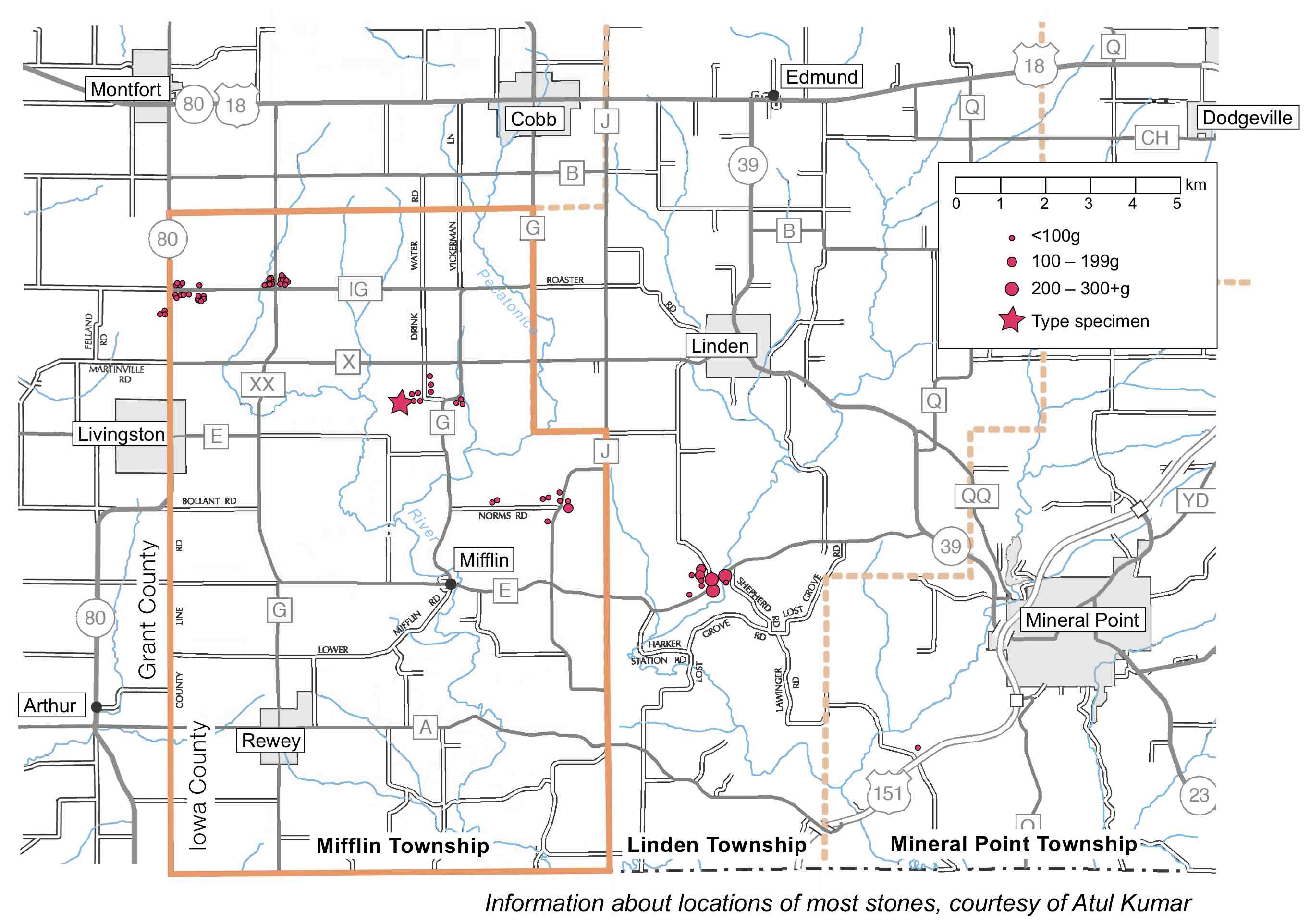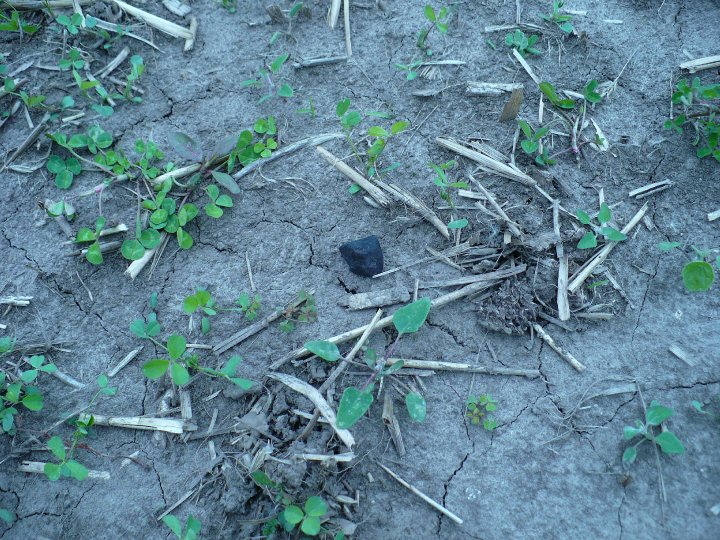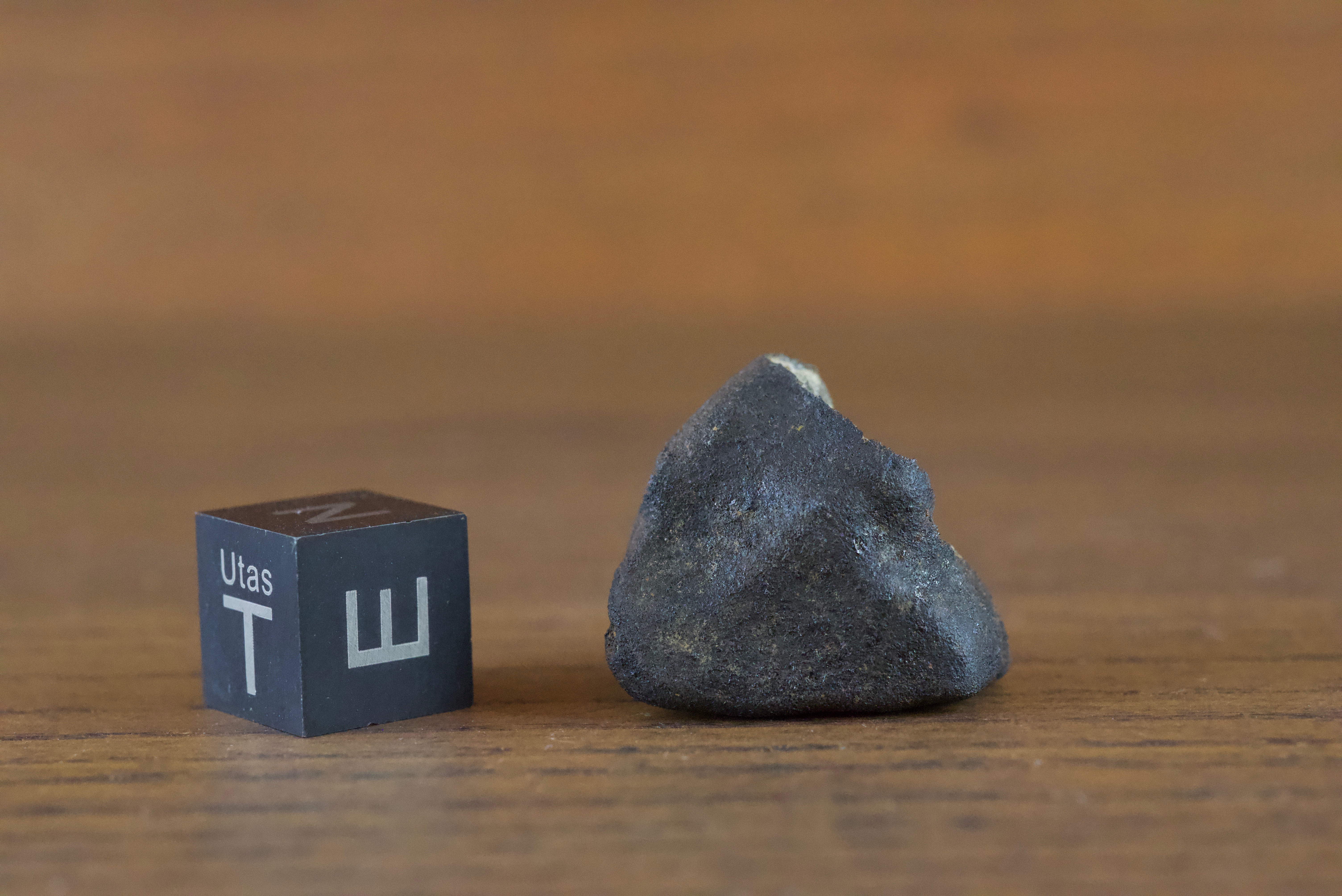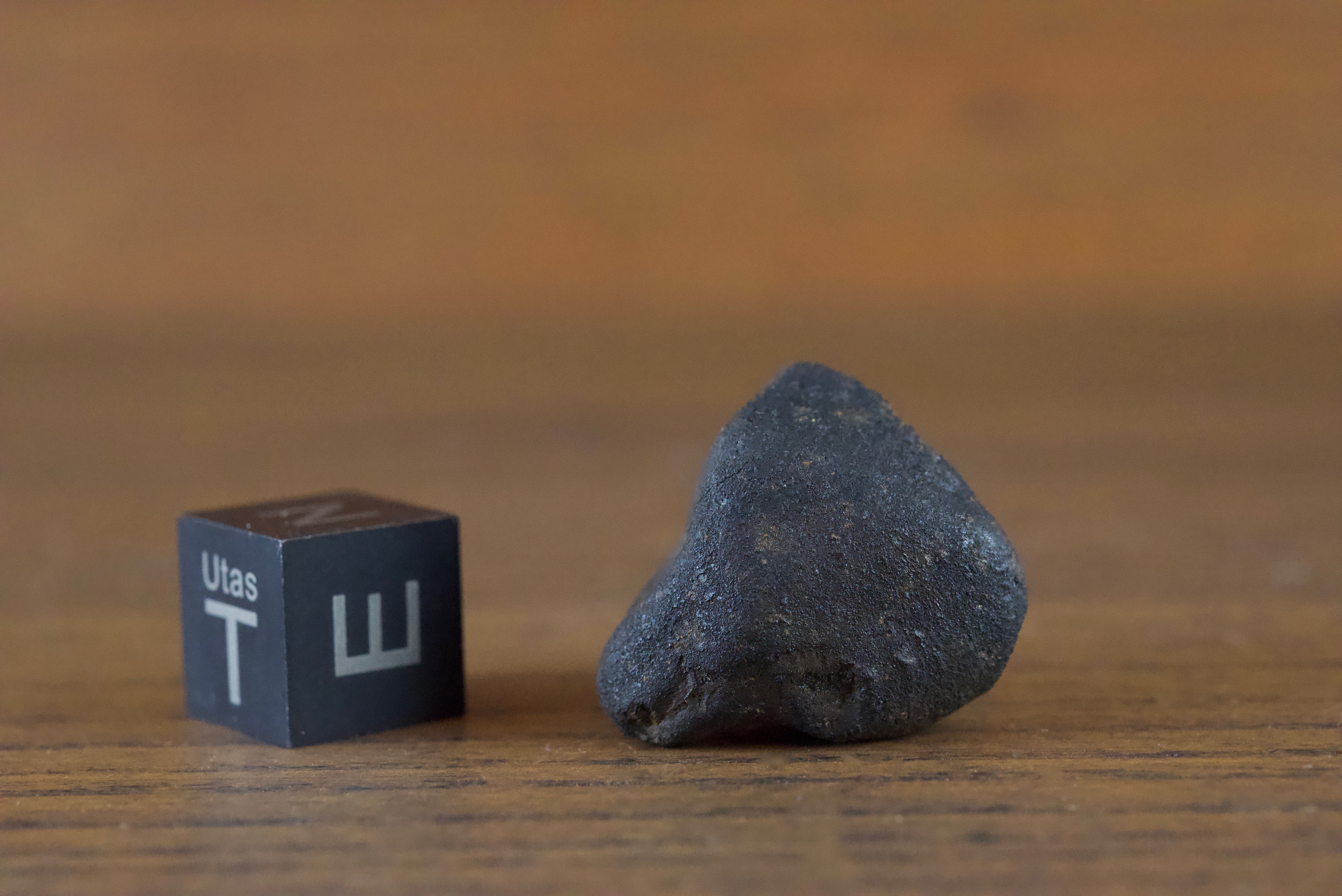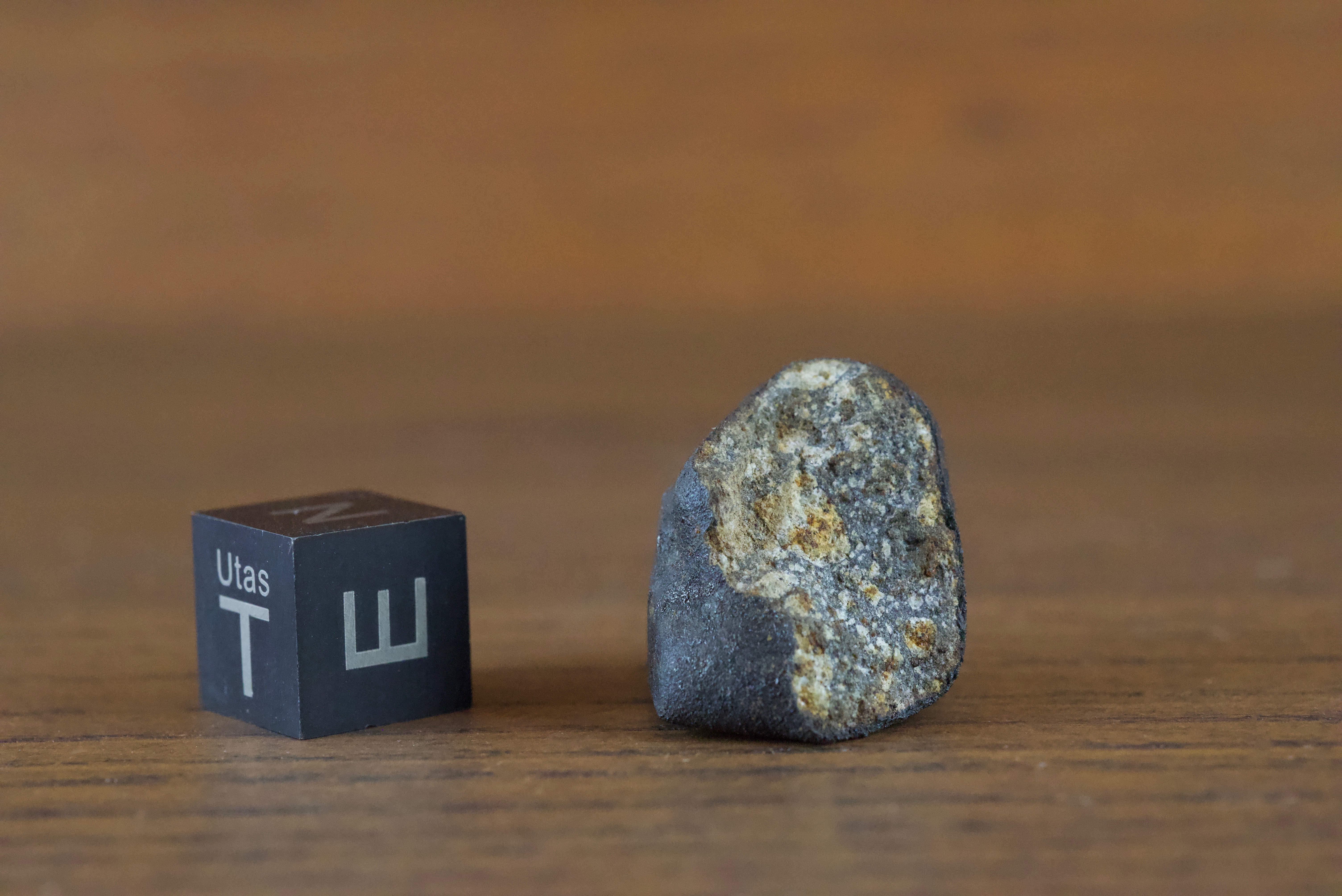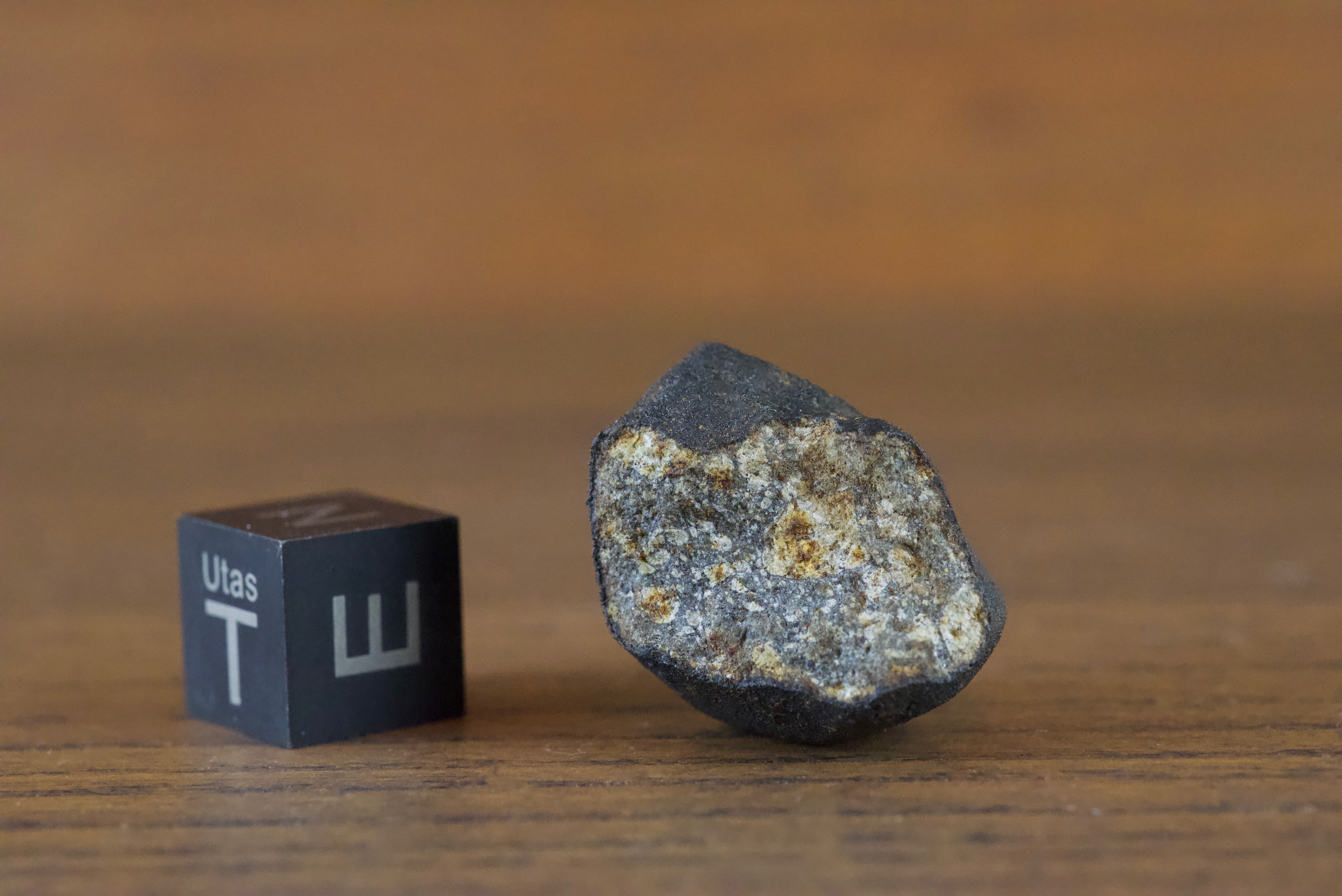Mifflin, L5
Mifflin was a fairly small American fall with only a few dozen stones recovered, and a total known weight of 3-4 kilograms, if that.

The strewn-field was long, with stones very sparsely distributed:
Map courtesy of the University of Wisconsin.
Usually, here, I’d talk about the meteorite, itself. Why it’s special. What makes it cool. This one’s a little different. The story of Mifflin reads more like a murder-mystery than a National Geographic article.
Mifflin was a relatively small fall, and because its parent asteroid entered the atmosphere at a shallow entry angle, the strewn field was huge and sparse. Due to the small number of stones found, and the fact that few hunters found more than one or two stones — not enough to sell — prices for pieces of Mifflin quickly rose to $50-300 per gram shortly after the fall.
Mifflin was a nicely brecciated L5. The meteorite had an unusual degree of contrast between dark brecciation and lighter clasts. It was pretty — and pretty distinctive at a glance.
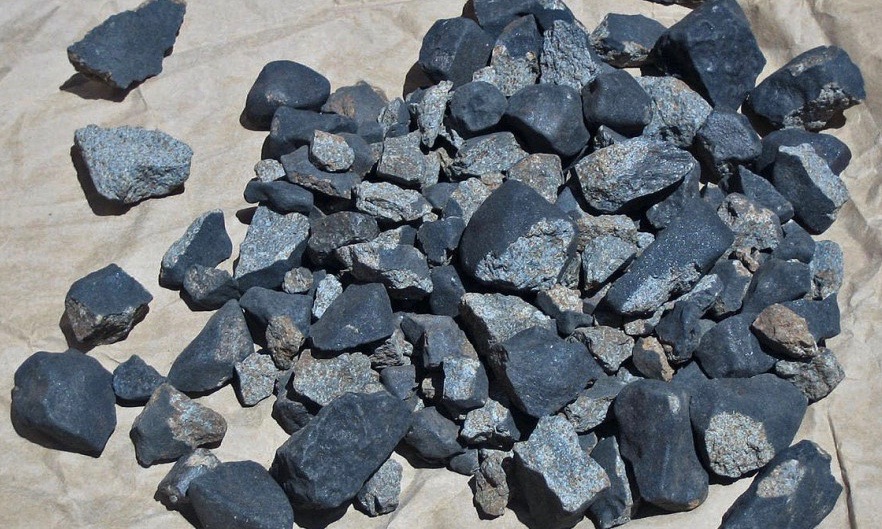
Some weird Mifflin specimens started surfacing on the market shortly after the fall. The odd stones looked like H-chondrites, with abundant metal grains poking out through their bumpy, matte fusion crust. Chondrites don’t usually fall with exposed metal grains. But many stones from larger, inexpensive Northwest African falls are collected and thrown into bags, where they rub and wear on each other as they make the rough journey out of Africa. This rough treatment exposes metal grains, especially on the exposed corners and edges of stones.
Note the wear on the exposed edges of stones (lighter grey color), and the glittery look that some stones have. The fusion crust has been worn off of protruding metal grains, revealing the fresh metal underneath.
No meteorite hunter found enough stones in Mifflin for that kind of wear to occur. No one was picking up handfuls of Mifflin meteorites and throwing them into bags. And, even with larger falls, I’ve never known a meteorite collector or dealer from Europe or the US to treat their finds so roughly. You wouldn’t see this kind of wear on a specimen of, say, Kosice or Ash Creek. What I saw on those odd “Mifflin” stones wasn’t technically impossible, but it really didn’t make sense. And those stones really looked like H-chondrites.
Some of the off-looking stones were complete, and some had been cut. Cut faces on these stones showed a lot of metal. And small chondrules. They looked like typical H5 chondrites, give or take, not an L5. The brecciation was also…different. It was much lighter in color, typical of two common and relatively inexpensive H-chondrite falls from the past few years: Bassikounou and Chergach. These odd stones just didn’t look like the Mifflin stones documented by hunters and collectors in the field.
Some of these specimens were being sold by members of the International Meteorite Collectors Association‘s (IMCA). I reported the odd stones to the group’s board of directors as they surfaced. I pointed out how and why the specimens looked wrong. I sent the board side-by-side photos, showing real vs. ‘off’ material.
…And they would tell me I was wrong. I still don’t understand what was going on over there. My correspondence with the board went on and off for about a year. I would point out bad-looking specimens, and they would respond by telling me that they couldn’t / wouldn’t do anything about it, and told me to drop it.
I reviewed our correspondence while making this page. It’s very frustrating, but almost funny, in retrospect. One email included a short reply from each board member in turn: I was repeatedly told, without exception, that no one could see the difference between an H and L chondrite from photos, and they asked me to drop the issue.
About a year later, a reasonable end-cut of the strange “Mifflin” turned up on eBay. It had everything going for it — too much metal, the weird crust, lighter brecciation — so I reached out to Dr. Tony Irving, at Washington University. He said he was willing analyze the end-cut ASAP, so I bought it and had it shipped directly to him. He confirmed that it was the same end-cut as was sold to me / in the photos, etc., and he analyzed it.
Long story short, it wasn’t Mifflin.
And the trouble didn’t stop there. Back in 2010, when the weird Mifflin specimens were first surfacing, the same few meteorite dealers who were selling it were also selling odd-looking specimens of other falls including, but not limited to, Zunhua (Xinglongquan), Park Forest, Ash Creek, Oum Dreyga, and Deport. I’d filed additional complaints about those specimens with the IMCA, to no avail. After the Mifflin turned out to be fake, I purchased some of the other ‘off’ specimens, and a few dealers and collectors were helpful and sent samples they’d bought directly to Tony. I made sure that Tony, as an impartial third party, confirmed that the specimens being sent to him were the ones pictured for sale — there were no loose ends. Everything he analyzed was misrepresented.
I approached the IMCA’s board with the new evidence. The sources of the bad material were finally booted from the group.
The events described above spanned over a year, and were, without any doubt, one of the strangest uphill battles I’ve ever had to fight.
I don’t know how much fake Mifflin was ultimately put into circulation, but I compiled a list of off-looking stones I had seen at the time, and the total was on the order of 200 grams. I would estimate that a minimum of 10-20% of “Mifflin” sold on the market was fake. Many of the bad stones were pulled from circulation, but some weren’t. After I made my post to the Meteorite-List announcing that the existence of fake Mifflin had been confirmed, several people sent me photos asking if I thought their stones were real or fake. One collector sent me photos of a small stone with a lot of exposed metal; he said that he valued my opinion, but wasn’t going to cut and analyze his stone to prove it. He said he would “rather keep it as a possible Mifflin.” It will probably be passed on as Mifflin, eventually…
So, you have to be careful. Many pieces of fake Mifflin went through multiple IMCA sellers, so it doesn’t matter who or where your label(s) comes from. If you have a Mifflin slice or individual and it looks like an H-chondrite, it’s probably not Mifflin.
I’d also be cautious with smaller pieces of those other falls and finds: ~all of the bad material that was put into circulation is still out there, and no one’s vetting stuff like that.
Thanks to Dr. Irving’s analytical work, we know for a fact that small fragments of Tamdakht were substituted for Zunhua (Xinglongquan) and Park Forest. Small Chergach and / or Bassikounou individuals were substituted for Park Forest and Ash Creek. Fake Oum Dreyga was limited to, from what I saw, a few slices of a lightly weathered L or LL NWA chondrite. The iron meteorite slices sold as “Deport” were from a small iron meteorite reputedly found in Texas by one of the sketchy dealers. It was analyzed at UCLA and shown to be indistinguishable from Campo del Cielo. After discovering that he wouldn’t be able to sell his Campo as a new iron, the dealer sliced it and sold it off as Deport…
As of 2019, one of the sellers has resurfaced and has been offering small cut pieces of NWA mesosiderites as Estherville. So, now there’s bad Estherville in circulation as well…
Some dishonest sellers appear to have learned (kind of) from their mistakes. A Chinese eBay seller is now selling slices of Hammadah al Hamra 346 (L6) as a much less common Chinese witnessed fall (also an L6) — the fakes are getting better.
In general: always scrutinize what you’re buying. I’ve seen museums swap labels or specimens accidentally, and historic specimens have often traded hands upwards of a dozen times or more, over the centuries. Those are the honest mistakes…
Below is a small individual of Mifflin. It’s not huge, but I wanted to get a real piece of the fall after going through all of that trouble. It was found by Derik Bowers, and shows fusion crust and brecciation typical of real Mifflin.
We ran into Derik while hunting for Ash Creek back in 2009. He was slowly combing a field with ~foot tall grass for small stones. It was raining pretty hard that day, but he stuck it out and managed to find a ~10 gram stone in the thick of it. He’s a very determined hunter in the field.
